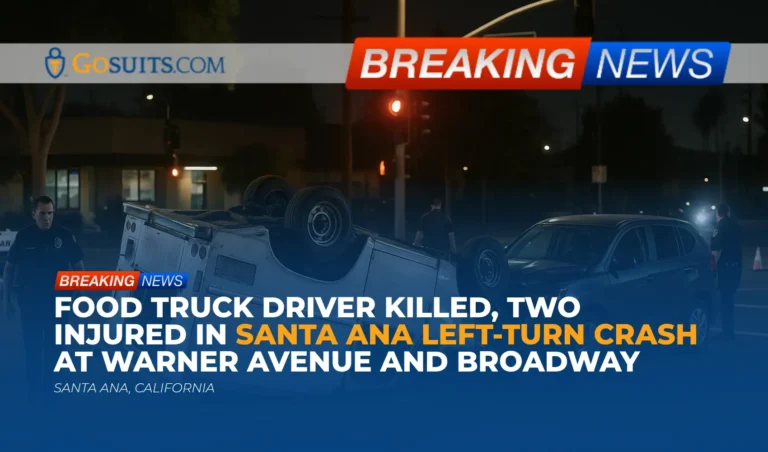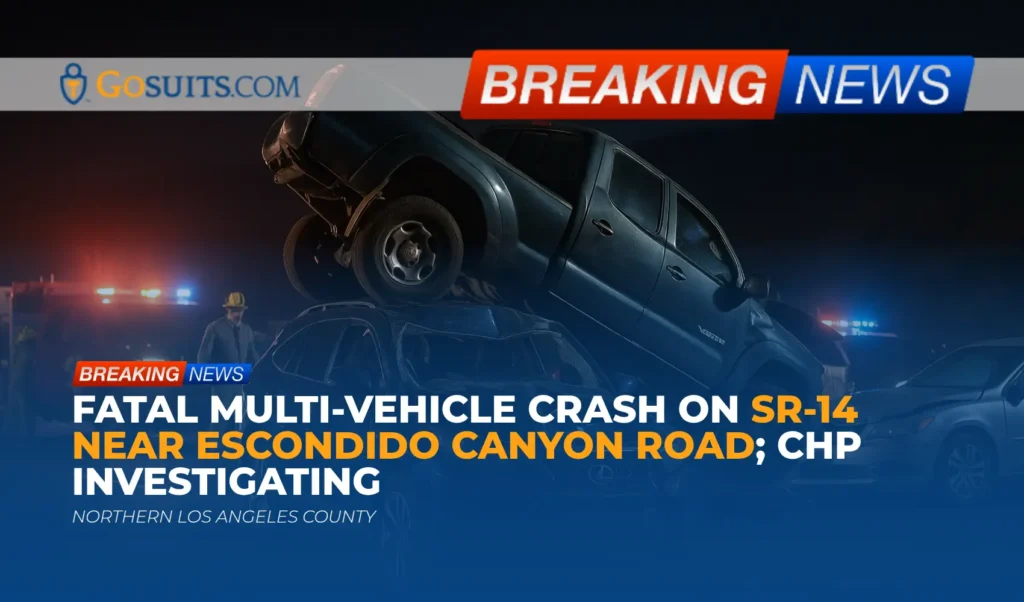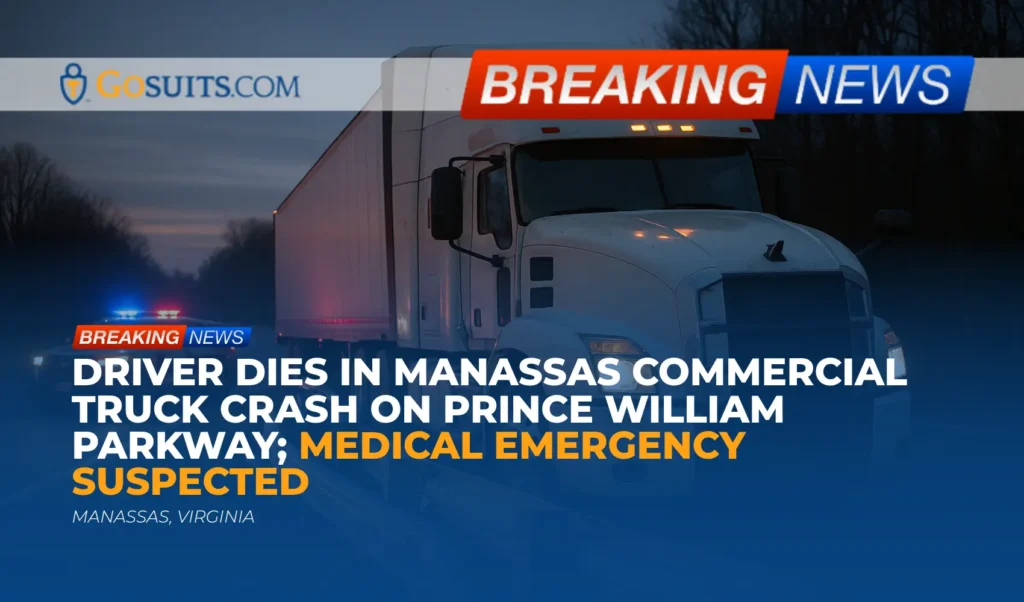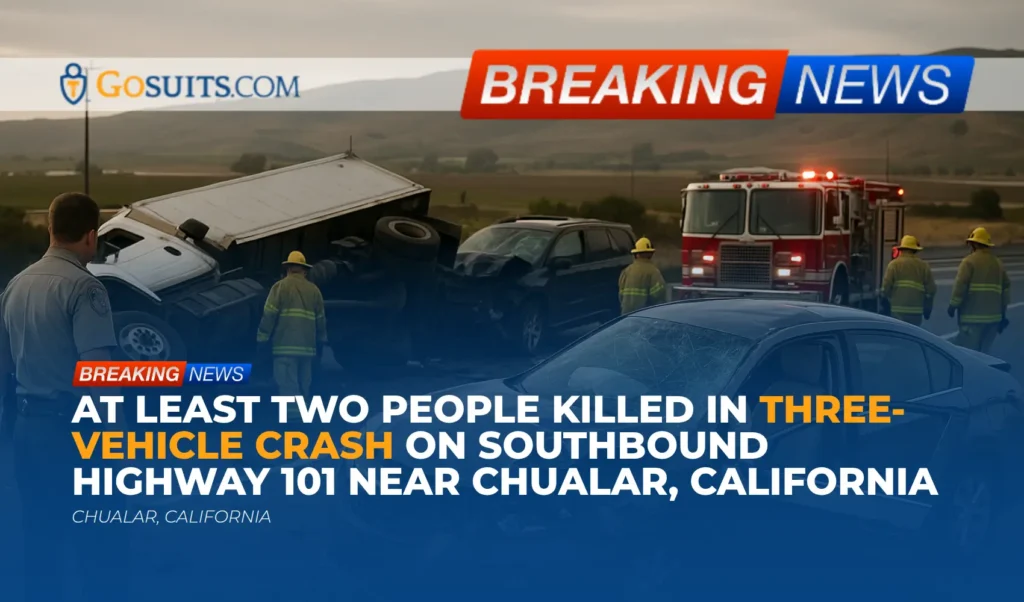- Incident overview and confirmed facts
- Location, time, and involved agencies
- What authorities have reported so far
- Why left-turn collisions pose high risk at intersections
- Rollover and ejection risks in truck crashes
- Potential civil liability considerations
- Options available to injured victims and families
- Preserving evidence after a serious crash
- How to obtain official records in Orange County
- Insurance and claims landscape after a fatal collision
- Community safety notes for Santa Ana intersections
- Sources and references
- Time-sensitive next steps after a serious crash
- Commentary from Gosuits Santa Ana, California Personal Injury Attorney
Incident overview and confirmed facts
A late-night traffic collision in Santa Ana resulted in the tragic death of a food truck driver and left two others with moderate injuries. According to information attributed to the Santa Ana Police Department, the crash occurred near the intersection of Warner Avenue and Broadway at approximately 10:46 p.m. on a Tuesday night. The food truck was attempting a left turn from Warner Avenue onto Broadway when it collided with an SUV. The impact caused the food truck to overturn. The driver, identified publicly as Richardson Ayala, age 67, of Anaheim, was ejected from the vehicle and pronounced deceased at the scene. A passenger riding in the food truck and the SUV’s driver were transported to a hospital with moderate injuries. The cause of the crash has not yet been determined, and the investigation is ongoing.
These facts raise difficult questions for loved ones, first responders, and the wider community. When a crash causes loss of life, it is normal to feel shock and grief, and it is understandable to seek clear, practical information that does not speculate ahead of the official findings. The discussion below provides general safety context, an overview of potential civil issues that can arise in serious intersection crashes, and step-by-step guidance for obtaining key records in Orange County.
Location, time, and involved agencies
The reported location is the intersection area of Warner Avenue and Broadway in Santa Ana, within Orange County, California. The time was approximately 10:46 p.m. on a Tuesday night. The Santa Ana Police Department is the investigating agency for this incident. In Orange County, fatal collisions are also within the jurisdiction of the Orange County Sheriff-Coroner, which handles death investigation and related records. Hospital transports were reported for two individuals with moderate injuries.
When a serious collision occurs in an urban intersection at night, multiple factors can be relevant to the investigation. These can include signal phasing and timing, visibility, traffic volumes, road design features, vehicle speeds, compliance with traffic controls, and whether any vehicles were turning across oncoming traffic. Investigators typically collect physical evidence from the scene, statements from involved parties and witnesses, and may review available traffic or business surveillance video.
What authorities have reported so far
The Santa Ana Police Department information indicates a left turn was underway when the collision took place, the food truck overturned, and the driver was ejected and died at the scene. Two other individuals suffered moderate injuries. The official cause of the crash has not yet been released. It is important to wait for the final traffic collision report and, if applicable, coroner findings to understand the sequence of events and contributing factors.
Investigators often analyze vehicle damage profiles, roadway marks, potential electronic data recorders from the vehicles, and traffic signal operations. Findings can take time. It is prudent not to draw conclusions before the report is issued.
Why left-turn collisions pose high risk at intersections
Left turns at intersections introduce conflict points between turning traffic and oncoming or crossing vehicles. California’s rules of the road require drivers making a left turn to yield the right of way to oncoming traffic that is close enough to be an immediate hazard. The California Vehicle Code addresses left turns specifically, including the duty of a turning driver to yield until it is reasonably safe to turn and complete the maneuver. See Vehicle Code section 21801 for statutory language on left turns and yielding.
Intersections are known to be high-risk environments due to the number of movements occurring simultaneously. The Federal Highway Administration notes that intersection crashes account for a significant share of traffic injuries and fatalities nationwide, and safety strategies often focus on conflict reduction, improved visibility, protected turn phases, and speed management. At night, visibility and gap judgment can be more challenging, which sometimes factors into left-turn crashes.
Key safety principles at intersections include yielding properly, obeying traffic signals, avoiding assumptions about other drivers’ speeds, and ensuring there is enough time and space to complete a turn. These are general safety points and do not imply fault in this incident.
Rollover and ejection risks in truck crashes
A vehicle overturn can significantly increase injury risk. National Highway Traffic Safety Administration materials highlight that rollovers, while less common than other crash types, are more likely to result in serious injury or death. Ejection from a vehicle is strongly associated with severe outcomes. NHTSA’s occupant protection guidance emphasizes that seat belt use reduces the risk of partial or full ejection during a crash, and that ejection is among the most deadly events associated with collisions.
Food trucks and other commercial vehicles can have different interior layouts that may complicate restraint use, depending on whether occupants are in the cab or workspace. The specific configuration in this incident has not been publicly detailed. The general safety takeaway is that keeping occupants inside the protective space of the vehicle and minimizing rollover forces can be life-saving, which is why occupant restraint systems and stable vehicle handling are key safety considerations.
Potential civil liability considerations
Right-of-way and the left-turn duty of care
California law requires drivers turning left or making a U-turn to yield to oncoming traffic that is close enough to pose an immediate hazard. Whether that duty was met in a particular collision depends on the facts, including traffic controls, speeds, distances, visibility, and driver actions at the time. Where protected left-turn signals exist, different right-of-way rules can apply during the protected phase. Determining whether the turn was protected or permissive, and whether a signal was properly functioning, is part of many intersection crash investigations.
Comparative fault in California
California applies comparative fault principles. Liability can be apportioned among multiple parties if more than one person’s actions contributed to a collision. This can come into play at complex intersections, where timing, speed, signal phases, and visibility may all matter. Comparative fault does not bar recovery, but any compensation can be reduced by the percentage of fault assigned to a party, depending on the specific facts as determined by a court or by agreement in a settlement.
Vehicle ownership and employer responsibility
If a driver was operating a vehicle for work, employer responsibility can be implicated. Under respondeat superior, an employer can be responsible for the acts of an employee acting within the course and scope of employment. Commercial auto policies may cover such vehicles. The structure of the food truck business and whether the driver was an employee, owner-operator, or contractor can affect coverage and responsibility. It is best for families to review available business records and insurance information with a qualified professional for guidance tailored to their situation.
Vehicle condition and product issues
In some crashes, separate issues such as mechanical condition, brake performance, tire condition, or steering components may be relevant. In rare cases, a product defect could be implicated. That determination requires technical inspection and expert analysis of the vehicles and components. Investigative steps can include reviewing maintenance logs, downloading event data recorders if present, and inspecting the vehicle systems.
Roadway design and public entity considerations
When a collision raises questions about traffic signal timing, signage, road geometry, or lighting, public entities may be examined for potential roadway conditions that contributed to a crash. California’s Government Claims Act imposes strict procedures and short deadlines for claims against public entities, often six months from the date of the incident. Whether this applies in any specific case depends on facts and legal analysis. Families with concerns about roadway conditions often seek a timely evaluation to preserve their ability to raise such claims if appropriate.

Options available to injured victims and families
After a fatal collision, families commonly face medical bills, funeral and burial costs, lost household income, and profound emotional loss. California law recognizes two main civil pathways in fatal incidents: wrongful death claims, which compensate eligible survivors for their losses, and survival actions, which address the decedent’s own claims that accrued before death, such as medical expenses or pain and suffering in certain circumstances as allowed by law. The specific remedies and available damages depend on the facts and applicable statutes.
California’s wrongful death statute specifies who may file and the types of losses that may be considered, which can include loss of financial support, companionship, and other harms suffered by survivors. There are deadlines to bring claims in California civil courts. Many wrongful death and personal injury claims must be brought within two years of the incident. Some claims, particularly those involving public entities, can have shorter notice deadlines. Because timing rules can be complex and fact-specific, families often benefit from speaking with a seasoned personal injury attorney in a confidential setting to understand their options.
In situations where injured victims survive with moderate or severe injuries, they may have claims for medical costs, lost wages, future care, and pain and suffering, depending on the circumstances and liability analysis. An attorney can help coordinate a plan for documenting injuries, gathering records, and managing communications with insurers so that injured people can focus on their recovery.
Preserving evidence after a serious crash
Evidence preservation is critical in intersection cases. Skid marks fade, vehicles are repaired or salvaged, and digital footage can be overwritten. Early steps can make a difference in understanding what happened and protecting the rights of those affected.
- Secure vehicle inspections: Arrange for timely inspections of the involved vehicles before they are altered or destroyed. This can include photographing damage, documenting interior conditions, and preserving relevant parts.
- Download event data recorders: Many vehicles store crash-related data such as speed, braking, and throttle inputs immediately before impact. Preservation and retrieval should be handled carefully to maintain integrity.
- Obtain scene documentation: Photographs, measurements, and diagrams of the intersection, light conditions, debris fields, and final rest positions can be valuable for reconstruction.
- Identify and contact witnesses: Gather names and contact information for anyone who saw the collision or its aftermath. Memories are freshest soon after an event.
- Seek nearby video: Businesses and residences near intersections often have cameras. Footage may be overwritten quickly, sometimes within days.
- Protect communications: Before speaking with any insurance company or claims representative, it is prudent to consult an attorney. Statements can be used later and may affect outcomes.
For families or injured people who are overwhelmed, it can help to designate a trusted person to assist with gathering records and keeping a timeline and file of documents.
How to obtain official records in Orange County
Traffic collision report
Traffic collision reports are typically prepared by the investigating agency. In Santa Ana, that is usually the Santa Ana Police Department for city-street crashes. Reports are generally available to involved parties or their representatives after processing. If a crash is investigated by the California Highway Patrol, CHP provides a standard process to request collision reports statewide. California law also describes the confidentiality and authorized release of collision reports to parties with a proper interest.
- California Highway Patrol reports: Request instructions are provided by CHP for collisions within its jurisdiction. See the CHP’s Request a Collision Report page.
- California Vehicle Code on confidentiality: The Vehicle Code explains that collision reports are for confidential use and are released to authorized persons, such as involved parties, their legal representatives, or insurers.
Coroner and autopsy records
The Orange County Sheriff-Coroner is the county office responsible for death investigations, autopsy reports when performed, and certain next-of-kin notifications. Families may request coroner records as permitted by law. The Sheriff-Coroner provides guidance on how to request records and which documents are available. Some items may only be released to next of kin, and processing times can vary.
Death certificates
Certified death certificates in California are issued through county recorders or the California Department of Public Health Vital Records. These documents are often needed for estate and insurance matters. The state provides instructions on eligibility, fees, and ordering options including in-person, mail, or authorized online vendors.
Key government links
- California Highway Patrol — Request a Collision Report
- California Vehicle Code § 20012 — Collision report confidentiality
- Orange County Sheriff-Coroner — Official site
- California Department of Public Health — Vital Records
Insurance and claims landscape after a fatal collision
Serious crashes often involve multiple coverages and competing interests. Understanding the insurance framework can help families make informed choices and avoid pitfalls that can affect their rights.
- Auto liability insurance: Every driver in California must maintain minimum liability coverage. Claims are typically presented to the insurer for the driver or vehicle owner alleged to be at fault, but liability is a fact-driven determination.
- Commercial auto coverage: Food trucks are commonly insured under commercial auto policies. Policy terms can differ from personal lines, and endorsements may affect coverage and limits.
- Uninsured/Underinsured Motorist (UM/UIM): If an at-fault driver lacks sufficient insurance, UM/UIM coverage on a decedent’s or injured person’s policy may apply, depending on the circumstances and policy language.
- Workers’ compensation death benefits: If a person is fatally injured while within the course and scope of employment, qualifying dependents may be eligible for death benefits and burial expenses through California’s workers’ compensation system. The Department of Industrial Relations provides information about death benefits and eligibility.
Insurance companies often seek statements early. It is generally advisable to consult an attorney first, since what someone says can be used in later evaluations or negotiations. Requesting a free consultation can help people understand potential coverage, deadlines, and step-by-step next actions before speaking to any insurer.
Community safety notes for Santa Ana intersections
Intersections like Warner Avenue and Broadway see a mix of through traffic, turning vehicles, and pedestrians. The Federal Highway Administration’s intersection safety materials explain that design decisions, traffic control, and operational strategies can substantially affect crash risk. For left turns, protected left-turn signal phases can reduce conflicts, and enhanced visibility, nighttime lighting, and clear markings can improve driver decision-making.
Community safety does not rest on a single group. Drivers can reduce risks by scanning for oncoming traffic when turning, avoiding speeding, and committing to a turn only when the gap is truly sufficient. City planners and engineers can consider adjustments based on crash history and traffic studies, such as signal timing improvements or protected turn phases where warranted. Businesses and residents near busy intersections can support efforts to preserve camera footage when serious incidents occur, which can assist investigations.

Sources and references
The following government resources provide general information relevant to the issues discussed above. These links do not opine on fault in this specific incident.
- California Vehicle Code § 21801 — Left turns and yielding
- Federal Highway Administration — Intersection Safety
- NHTSA — Vehicle Rollovers
- NHTSA — Seat Belts and Ejection Risk
- NHTSA — Event Data Recorders
- California Highway Patrol — Request a Collision Report
- California Vehicle Code § 20012 — Collision Report Confidentiality
- California Code of Civil Procedure § 377.60 — Wrongful Death
- California Code of Civil Procedure § 335.1 — Two-year limitation
- California Government Code § 911.2 — Public entity claim deadline
- Orange County Sheriff-Coroner — Official site
- California Department of Public Health — Vital Records
- Judicial Council of California — General civil resources
- California Department of Industrial Relations — Workers’ Compensation Benefits
Time-sensitive next steps after a serious crash
When a community faces a fatal or serious injury collision, time matters. Important rights and evidence can be affected by early decisions. The following are practical, time-sensitive steps that can help protect clarity and options.
- Request official records promptly: Obtain the traffic collision report when it becomes available, request the coroner’s records if you are next of kin, and order certified death certificates as needed for administrative and estate matters. These documents often serve as the foundation for insurance and benefits claims.
- Preserve vehicles and data: If possible, ensure the involved vehicles are held for inspection before any disposal. Event data recorders, interior conditions, and component wear can be critical in understanding causation.
- Secure video and witness information: Nearby camera footage may be overwritten quickly. Early outreach to businesses and residents can prevent loss of valuable evidence.
- Coordinate medical and financial documentation: Keep track of hospital records, invoices, employment documents, and proof of income or support. Organized documentation can speed up claim evaluations.
- Speak with an attorney before insurers: Insurance companies may seek recorded statements and authorizations. It is generally prudent to consult an attorney first. What someone says can be quoted back later and can shape claim outcomes. Many firms offer free consultations so people can understand their rights and the best sequence of steps before starting insurance conversations.
- Be mindful of deadlines: California’s general wrongful death limitation period is commonly two years, and public entity claims often require notice within six months. Missing a deadline can limit options, so calendar key dates once they are known.
Acting within the first days and weeks can protect evidence, clarify coverage, and reduce avoidable delays. These steps are educational guidance intended to help the public understand why early, careful action can matter after a serious collision.
Commentary from Gosuits Santa Ana, California Personal Injury Attorney
Our thoughts are with everyone affected by this heartbreaking crash. A life lost and multiple injuries in a neighborhood intersection create ripples of grief and uncertainty that reach far beyond the scene. This commentary is offered for educational purposes and general information, with respect for the ongoing investigation and the people involved.
Based on the preliminary details reported by local authorities, this appears to be a complex left-turn collision at night, followed by a rollover and an ejection. Intersections are among the most complicated places on the road, and the risk profile increases when a vehicle is turning across opposing traffic. The sequence of events, the timing of any signals, and the movements of both vehicles will all matter in the final analysis. Until the official report is complete, it is important not to speculate.
In our experience representing families after serious collisions, confusion often deepens when insurance companies and corporate carriers get involved. Adjusters may contact people early, ask for recorded statements, and request broad medical authorizations. Those conversations can feel routine, yet what is said can be used later to challenge liability, minimize injuries, or narrow the scope of damages. Commercial policies may have endorsements and exclusions that are not obvious from a first reading. Navigating these issues without guidance can lead to missed coverage, avoidable delays, or preventable disputes.
A confidential, free consultation allows people to understand potential avenues such as auto liability, commercial coverage, UM or UIM benefits, and in appropriate circumstances workers’ compensation death benefits. It also helps families prioritize evidence preservation, records requests, and deadlines, including the shorter timelines that can apply to claims involving public entities. The law cannot undo a loss, yet informed steps can bring clarity and protect rights while the investigation proceeds.






